Controverscial.Com
![]()
Welcome
![]()
|
Controverscial.Com
Welcome
|
|
|
Controverscial.Com
Welcome
|



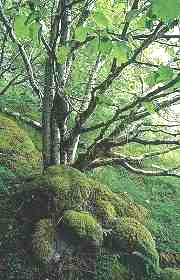
The Hazel tree (Corylus avellana) is member of the birch family (Betulaceae), and is one of the sacred trees of Wicca/Witchcraft. Of old the Hazel tree was revered by the ancient druids and is the ninth tree of the Celtic tree calendar, dated 5th Aug – 1st Sept. In Celtic folklore the Hazel tree is considered a tree of knowledge, particularly in Ireland were it nuts are a symbol of great mystical wisdom. There are some 15 species of Hazel trees native to the Northern temperate zones, the fruit of which are variously called Filbert, Hazelnut or Cobnut depending on the relative length of the nut to its husk. The Filbert variety is of the cultivated European species.
Common throughout Britain and Europe, Hazel trees can also be found in America, North Africa, Turkey and in Central and Northern Asia. More of a large shrub than a tree, its average height is 12–20 feet (3½-6 meters) though is has been recorded growing up to 60 feet (18 meters). Its preference is to grow in copses, oak woods and hedgerows, and thrives in damp places near to ponds and streams, however it will fruit better if grown were the land has good drainage.
The wood of the Hazel tree is a whitish red and has a close and even grain. Today it is mainly grown and coppiced for its smooth reddish-brown stems, which have a great toughness and elasticity from which well-veined veneers are produced from its larger roots. The wood was of particular use to the countryman, and was used to make hampers, hoops, wattles, shepherds crooks, walking sticks, fishing rods, whip-handles and other country items such as rustic seats and baskets for gardens. After burning, the wood of the Hazel tree also makes good charcoal, which crayons and gunpowder are made.
The bark of the Hazel tree is light brown in colour and smooth, except for speckles of spongy light brown lenticels that allow the tree to breathe. The leaves of the Hazel are quite large 2–4 inches (5-10 cm), and are slightly heart-shaped with toothed edges rounding into a long point. In the bud they are folded into several longitudinal plaits. The leaves open in early spring growing singly on a short stem, at which time they tend to be lime-green in colour, but as the year progresses they turn from mid-green in the summer to tints of green, yellow-brown and pink in autumn. The leaves stay with the tree much longer than most other trees, sometimes well into December by which time they turn to shades of yellow, dull orange and red.
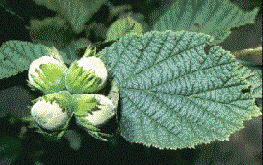
The flowers of the Hazel appear in January, or sometimes even as early as October given the right climatic conditions, though more frequently they won’t open until March. Male and female flowers form on the same tree but in distinct clusters or catkins. The male catkins are pendulous and first appear as minute sausage-shaped buds of a dullish brown colour. As they mature they turn a pale greenish-yellow or primrose colour and when its pollen has been shed to green. The catkin consists of a number of bract-like scales each bearing eight anthers on its inner surface; from these fine-grained yellow pollen is shaken by the wind, after which they are discarded. The female flowers are grouped in little egg-shaped buds that sit sessile on the branch. The flower itself is a two-chambered ovary surrounded by a velvety cup-like bract, which later grows into the large leafy husk of the nut. It is surmounted by a short style with two long crimson stigmas forming a tassel at the top of the cluster.
The fruit of the Hazel tree has a peculiarity in its growth that is worthy of note. The male flowers or catkins are mostly produced on the ends of the year’s shoots, while the female flowers are produced close to the branch where they are completely sessile or un-stalked. In most fruit trees when the flower is fertilized, the fruit is produced in exactly the same place, but with the hazelnut a different arrangement takes place. As soon as the flower is fertilized it starts away from the parent branch and a fresh branch is grown bearing the new leaves with nuts at its end, thus the new nut is produced several inches away from the spot on which its parent flower originally grew.
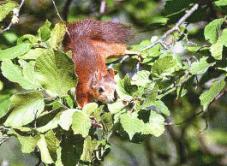
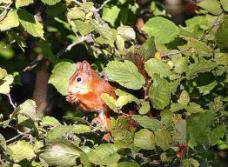
Hazelnuts generally ripen by September and can be eaten directly off the tree. They also provide a rich source of food for many small animals, such like squirrels and dormice. Birds and in particular nut-hatchers (a variety of small passerine birds of the family “Sittidae”) are partial to the nuts, wedging them in crevices and beating at them with their beaks until they crack. In the old days hazelnuts provided a plentiful and easily stored source of protein, and were often ground up and mixed with flour to make nourishing breads. Left un-eaten the nuts fall to the ground where their shells crack and a new root and stem emerges. As the root embeds into the earth and becomes established, the stem rises and a new sapling is born.
In Roman Britain, Hazel trees were once cultivated and became so abundant that Scotland was named Caledonia (a term derived from Cal-Dun, meaning “Hill of Hazel”) after them. Hazel trees were also well known in Europe where it had been growing since pre-historic times, and where hazelnuts formed part of the staple food diet of the Swiss lake-dwellers. An old custom in Europe was to use small flexible twigs from the Hazel tree to secure grape vines to stakes. As the grape vine is sacred to Bacchus (the Roman god of intoxication and vegetation), any goats or other animals found feeding on the vines were caught and sacrificed to him on spits made of Hazel.
Since mediaeval times trees have been considered sacred. In Ireland in particular three trees gained special prominence, the Apple tree for its beauty, the Hazel for its wisdom and the Oak for its strength. Indeed so sacred were these trees regarded that any unjustified felling of an Apple, Hazel or Oak tree, was a crime worthy of the death penalty. The wood of these trees was also used to construct funeral pyres, at which times particular respect seems to have been paid to the Hazel in relation to its wisdom. Hazel-wands have often been found in the coffins of notable personalities, for among the chiefs and rulers of ancient times, a wand of Hazel was considered a symbol of authority and wisdom.
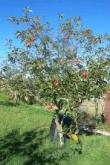
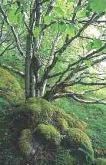
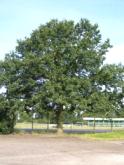
In Roman mythology the Hazel is attributed to the god Mercury (Mercurius), whose counterpart in Greek mythology is Hermes. Mercury/Hermes was the messenger of the gods and also the god of commerce, manual skill, eloquence, cleverness, travel and thievery. He is often depicted with a staff or wand of Hazel called a Caduceus, and wearing a broad rimed travelling hat and sandals. As Hermes in Greek legend, when he was only a few hours old he escaped from his cradle and went out in search of adventure. Later that evening feeling hungry, he stole two oxen from Apollo (the god of the sun) and hid them in a cave where he killed and eat them. When Apollo discovered what had happened, Hermes played to him on a lyre, which he made by stretching cords across a tortoise shell. Apollo was so charmed by his music he allowed him to go unpunished. In gratitude Hermes gave his lyre to Apollo, who in return gave him a magical Caduceus made of Hazel, said to bestowed wisdom, wealth and prosperity on its owner by turning everything it touched into gold.
Mercury/Hermes as the messenger of the gods could move swiftly through the air and sea. As such the artistic impression of him changed, wings in his hair replaced the broad rimed hat and the sandals became wings at his ankles to aid him as he travelled on the wind. The Caduceus is depicted with two ribbons tied to it indicting speed as he flowed through the air. Later the ribbons changed to serpents as the Caduceus was adopted by the medical profession and became the symbol of the healing arts. The two serpents entwined around the Caduceus are symbolic of illness and health, as well as life and death, for in ancient symbolism the venom of a snake could be used to both heal and poison.
An Irish legend concerning the Hazel has been passed down through its association with water and Salmon. One is a description of Connla’s Well at the foot of Cuilcagh mountain in County Cavan, which is believed to be the source of the River Shannon. The well is surrounded by nine Hazel trees, which produce both flowers and fruit (beauty and wisdom). As the fruit (the nuts) fall into the well, the salmon that live in the well feed on them and whatever number of nuts they eat, so the same number of spots appears on their bodies. The salmon of the Shannon are much prized by fishermen in Ireland, for many believe them to possess wisdom, the recipients of all knowledge gained from the nuts of the Hazel tree.
An old custom of the country village people was to go on picnics called “go’in a nutt’in” taking with them ale or cider. The term “go’in a nutting” was used as a euphemism for courting, the gathering of nuts in the woods and scrubland gave the young folk lots of opportunity for making contact with the object of one’s desire, and was therefore an occasion few would want to miss.
Down through the ages the Hazel has always been considered magical, and was used primarily for its powers of divination. The use of Hazel divining rods (dowsing rod) to detect water and mineral veins comes down from antiquity, the art of which is called “rhabdomancy”. Typically a divining rod has two forks off its main stem shaped like the letter “Y”. The two forks of the rod are gripped with the fore fingers along the forks, so that the tail end of the rod points down toward the ground to begin searching. Another method was to peel the bark of the rod and simply lay it on the palm of the hand. Of old the same method was used to find treasure, thieves and murderers.
The practice of dowsing is still common today in Cornwall, and in other European Country’s. According to folklore and superstition, the dowsing rod is guided to water or mineral lodes by guardian pixies, or the kobolds (gnomes) of Germany. When the dowsing rod begins to twitch, the dowser or rhabdomancer is said to feel a sudden acceleration or retardation of the pulse, or a sensation of great heat or cold at the moment of discovery. In the past other woods such as the Willow tree, were also used for dowsing.
No doubt it was from using Hazel rods in divination, that its fruit the Hazelnut became associated with fortune telling. In Scotland an old custom of love divination is still practiced on Halloween, in which two hazelnuts are given the names of lovers and placed on burning embers. If they burn quietly and remained side by side, the lovers were considered faithful, but if the nuts crack, spit or roll apart, they were considered to be ill-matched and one of them unfaithful.
In ritual Hazel wands are used in connection with mercurial energy from which poetic and magical inspiration is gained and imparted. Hazel wands can also be used to divine suitable places in which to work magick. An old method of cutting a wand was to find a tree that has yet to bare fruit, and at sunrise on a Wednesday (the day ruled by Mercury), to cut a branch with a single stroke from a sickle. The Hazel is considered to be at its most powerful during early spring while its sap is still rising, and in autumn when its sap and energy is fully contained within ready for its harvest of nuts. A good divining rod is said to “squeal like a pig” when held under water.
The nuts of the Hazel were commonly used to bring luck by stringing them together and hanging them in the house. Such a string of nuts were often given to a new bridesmaid as a gift to wish her wisdom, wealth and good health. When eaten the hazelnuts are said to increase fertility, and of old were eaten before divination to increase inspiration.
Also of old, supple twigs if Hazel were woven into crowns and called “wishing caps”, which when worn and if you wished very hard, would make all your desires come true. Sailors, believing them to offer protection against bad storms at sea, also wore wishing caps. The ancient druids believed they could induce invisibility by wearing them. Twigs of Hazel placed on window ledges give protection against lightening, and three pins of Hazel hammered into a wall of the house would protect it from fire.
The physical medicinal uses of the Hazel are but a few, its main virtue being that of wisdom. Its nuts however were often worn as talismans for a healthy life gained through that wisdom. Some say it has the power to cure fevers, diarrhoea and excessive menstrual flow, but I can find no further evidence to back this up (an old wife’s tale perhaps?).
Carrying a double hazelnut in a pocket was and old country charm used to prevent toothache. If bitten by a snake, an equal armed cross made of Hazel laid upon it, was an ancient remedy said to draw out the poison. The kernels of the nut ground fine and mixed with mead or honeyed water is said to be good for coughs that won’t clear, and when mixed with pepper in a decoction will clear a muzzy head.
The Hazel is known by the folk names: Coll, the Poets Tree and Dripping Hazel. Its deity associations are with: Mercury, Hermes, Thor, Mac Coll, Aengus, Artemis and Diana. Its ruling planets are the Sun and Mercury. Its associated element is Air, but it also has a great affinity with Water. Its gender is masculine. It is used to attract the powers needed for: Protection, Fertility, Luck, Lightening, Inspiration and anything associated with the element Air.
Astrologically Hazel people (i.e. those who are born during the month of August) have the soul of a pioneer, but they waste too much energy on competitive thoughts and fighting abuses instead of letting their own gifts and skills ripen. They can be impatient for things to happen, and hurry things along when they should sit back and let things take their own course, so intent on running around trying new things they forget the value of being patience. When Hazel people listen to their own natural rhythms, they find they are happier and more prepared spiritually and physically. They are generally charming, undemanding and understanding, and know how to make an impression. They can be active fighters for social causes, are popular but can be moody. They are capricious lovers but are honest and tolerant partners. They also have a precise sense of judgment about what is right and wrong.
![]()
Cunningham's Encyclopedia Of Magical Herbs - By Scott Cunningham.
Encyclopedia of Wicca & Witchcraft - By Raven Grimassi.
The Encyclopedia of Witches & Witchcraft - By Rosemary Ellen Guiley.
Tree Wisdom (The definitive guidebook to the myth, folklore and healing power of Trees) - By Jacqueline Memory Paterson.
AA Book of Britain's Countryside.
The Penguin Hutchinson Reference Library (CD cassette).
Microsoft Encarta Encyclopedia (CD cassette).
Plus many websites to numerous to mention.
First published
the 25th January 2002, 13:41:02 - Updated the 04th August 2008
© George Knowles
![]()
![]()

Let there be peace in the world - Where have all the flowers gone?
My Personal Page / My Place in England, UK / My Family Tree (Ancestry)
Wicca/Witchcraft / What is Wicca / What is Magick
Traditional Writings:
Wiccan Rede / Charge of the Goddess / Charge of the God / The Three-Fold Law (includes The Law of Power and The Four Powers of the Magus) / The Witches Chant / The Witches Creed / Descent of the Goddess / Drawing Down the Moon / The Great Rite Invocation / Invocation of the Horned God / The 13 Principles of Wiccan Belief / The Witches Rede of Chivalry / A Pledge to Pagan Spirituality
Correspondence Tables:
Incense / Candles / Colours / Magickal Days / Stones and Gems / Elements and Elementals
Traditions Part 1 - Alexandrian Wicca / Aquarian Tabernacle Church (ATC) / Ár Ndraíocht Féin (ADF) / Blue Star Wicca / British Traditional (Druidic Witchcraft) / Celtic Wicca / Ceremonial Magic / Chaos Magic / Church and School of Wicca / Circle Sanctuary / Covenant of the Goddess (COG) / Covenant of Unitarian Universalist Pagans (CUUPS) / Cyber Wicca / Dianic Wicca / Eclectic Wicca / Feri Wicca /
Traditions Part 2 - Gardnerian Wicca / Georgian Tradition / Henge of Keltria / Hereditary Witchcraft / Hermetic Order of the Golden Dawn (H.O.G.D.) / Kitchen Witch (Hedge Witch) / Minoan Brotherhood and Minoan Sisterhood Tradition / Nordic Paganism / Pagan Federation / Pectic-Wita / Seax-Wica / Shamanism / Solitary / Strega / Sylvan Tradition / Vodoun or Voodoo / Witches League of Public Awareness (WLPA) /
Gods and Goddesses (Greek
Mythology) / Esbats &
Full Moons / Links
to Personal Friends & Resources / Wicca/Witchcraft
Resources / What's a spell? /
Circle Casting and
Sacred Space / Pentagram
- Pentacle / Marks
of a Witch / The Witches
Power / The Witches Hat
/ An
esoteric guide to visiting London / Satanism
/ Pow-wow
/ The
Unitarian Universalist Association / Numerology: Part 1
/ Part 2 / Part
3 / A
history of the Malleus Maleficarum: includes: Pope
Innocent VIII /
The
papal Bull /
The
Malleus Maleficarum /
An extract from the Malleus Maleficarum
/ The letter of approbation
/ Johann
Nider’s Formicarius /
Jacob
Sprenger /
Heinrich Kramer /
Stefano Infessura
/ Montague Summers /
The Waldenses
/ The Albigenses
/
The Hussites / The
Sun Dance
/ Shielding (Occult
and Psychic Protection) /
Sabbats in History and Mythology / Samhain (October 31st) / Yule (December 21st) / Imbolc (February 2nd) / Ostara (March 21st) / Beltane (April 30th) / Litha (June 21st) / Lughnasadh (August 1st) / Mabon (September 21st)
Rituals contributed by Crone: Samhain / Yule / Imbolc / Ostara / Beltane / Litha / Lammas / Mabon
Tools of a Witch / The Besom (Broom) / Poppets and Dolls / Pendulums / Cauldron Magick / Mirror Gazing
Animals in Witchcraft (The Witches Familiar) / Antelope / Bats / Crow / Fox / Frog and Toads / Goat / Honeybee / Kangaroo / Lion / Owl / Phoenix / Rabbits and Hares / Raven / Robin Redbreast / Sheep / Spider / Squirrel / Swans / Wild Boar / Wolf / Serpent / Pig / Stag / Horse / Mouse / Cat
In Worship of Trees - Myths, Lore and the Celtic Tree Calendar. For descriptions and correspondences of the thirteen sacred trees of Wicca/Witchcraft see the following: Birch / Rowan / Ash / Alder / Willow / Hawthorn / Oak / Holly / Hazel / Vine / Ivy / Reed / Elder. Also see: The Willow Tree (Folk Music)
Mystical Sacred Sites - Stonehenge / Glastonbury Tor / Malta - The Hypogeum of Hal Saflieni / Avebury / Cerne Abbas - The Chalk Giant / Ireland - Newgrange /
Rocks and Stones:
Stones - History, Myths and Lore
Articles contributed by Patricia Jean Martin: / Apophyllite / Amber / Amethyst / Aquamarine / Aragonite / Aventurine / Black Tourmaline / Bloodstone / Calcite / Carnelian / Celestite / Citrine / Chrysanthemum Stone / Diamond / Emerald / Fluorite / Garnet / Hematite / Herkimer Diamond / Labradorite / Lapis Lazuli / Malachite / Moonstone / Obsidian / Opal / Pyrite / Quartz (Rock Crystal) / Rose Quartz / Ruby / Selenite / Seraphinite / Silver and Gold / Smoky Quartz / Sodalite / Sunstone / Thunderegg / Tree Agate / Zebra Marble
Wisdom:
Knowledge vs Wisdom by Ardriana Cahill / I Talk to the Trees / Awakening / The Witch in You / A Tale of the Woods
Articles and Stories about Witchcraft:
Murder by Witchcraft / The Fairy Witch of Clonmel / A Battleship, U-boat, and a Witch / The Troll-Tear (A story for Children) / Goody Hawkins - The Wise Goodwife / The Story of Jack-O-Lantern / The Murder of the Hammersmith Ghost / Josephine Gray (The Infamous Black Widow) / The Two Brothers - Light and Dark
Old Masters of Academia:
Pliny the Elder / Hesiod / Pythagoras
Abramelin the Mage / Agrippa / Aidan A. Kelly / Albertus Magnus “Albert the Great” / Aleister Crowley “The Great Beast” / Alex Sanders "the King of the Witches” / Alison Harlow / Amber K / Anna Franklin / Anodea Judith / Anton Szandor LaVey / Arnold Crowther / Arthur Edward Waite / Austin Osman Spare / Biddy Early / Bridget Cleary / Carl Llewellyn Weschcke / Cecil Hugh Williamson / Charles Godfrey Leland / Charles Walton / Christina Oakley Harrington / Damh the Bard (Dave Smith) / Dion Fortune / Dolores Aschroft-Nowicki / Dorothy Morrison / Doreen Valiente / Edward Fitch / Eleanor Ray Bone “Matriarch of British Witchcraft” / Dr. John Dee and Edward Kelly / Dr. Leo Louis Martello / Eliphas Levi / Ernest Thompson Seton / Ernest Westlake and the Order of Woodcraft Chivalry / Fiona Horne / Friedrich von Spee / Francis Barrett / Gerald B. Gardner / Gavin and Yvonne Frost and the School and Church of Wicca / Gwydion Pendderwen / Hans Holzer / Helen Duncan / Herman Slater "Horrible Herman" / Israel Regardie / James "Cunning" Murrell / Janet Farrar & Gavin Bone / Jessie Wicker Bell “Lady Sheba” / John Belham-Payne / John George Hohman / John Gerard / John Gordon Hargrave (the White Fox) / John Michael Greer / John Score / Johannes Junius the Burgomaster of Bamberg / Joseph John Campbell / Karl von Eckartshausen / Laurie Cabot "the Official Witch of Salem" / Lewis Spence / Margaret Alice Murray / Margot Adler / Marie Laveau the " Voodoo Queen of New Orleans" / Marion Weinstein / Matthew Hopkins “The Witch-Finder General” / Max Ehrmann and the Desiderata / Monique Wilson the “Queen of the Witches” / Montague Summers / Nicholas Culpeper / Nicholas Remy / M. R. Sellers / Mrs. Grieve "A Modern Herbal" / Oberon and Morning Glory Zell-Ravenheart / Old Dorothy Clutterbuck / Old George Pickingill / Paddy Slade / Pamela Colman-Smith / Paracelsus / Patricia Crowther / Patricia Monaghan / Patricia “Trish” Telesco / Philip Emmons Isaac Bonewits / Philip Heselton / Raymond Buckland / Reginald Scot / Robert Cochrane / Robert ‘von Ranke’ Graves and "The White Goddess" /
Rudolf Steiner / Rosaleen Norton “The Witch of Kings Cross” / Ross Nichols and The Order of Bards, Ovates & Druids / Sabrina - The Ink Witch / Scott Cunningham / Selena Fox / Silver Ravenwolf / Sir Francis Dashwood / Sir James George Frazer / S.L. MacGregor Mathers and the “Hermetic Order of the Golden Dawn” / Starhawk / Stewart Farrar / Sybil Leek / Ted Andrews / The Mather Family - includes: Richard Mather, Increase Mather, Cotton Mather / Thomas Ady / Vera Chapman / Victor Henry Anderson / Vivianne Crowley / Walter Brown Gibson / William Butler Yeats / Zsuzsanna Budapest
Many of the above biographies are brief and far from complete. If you know about any of these individuals and can help with aditional information, please cantact me privately at my email address below. Many thanks for reading :-)
While I have taken due care and dilligence to credit all sources where possible, this website may contain copyrighted material which has not been specifically authorized by the copyright owner. My use of making such material available here is done so in my efforts to advance our understanding of religious discrimination, the environmental and social justice issues etc. If you wish to use copyrighted material from this wedsite for purposes of your own then you must obtain permission from the relevant copyright owner yourself.
![]()
My online email discussion group:
http://groups.yahoo.com/group/Email_Witches

Help send a message of peace around the world! The Dove of Peace flies from site to site, through as many countries as possible. It does not belong to ANY belief system. Please help make a line around the globe by taking it with you to your site, by giving it to someone for their site, by passing it on to another continent or to the conflict areas of the world. May trouble and strife be vanquished in it's path.

mailto:George@controverscial.com
![]()
|
|